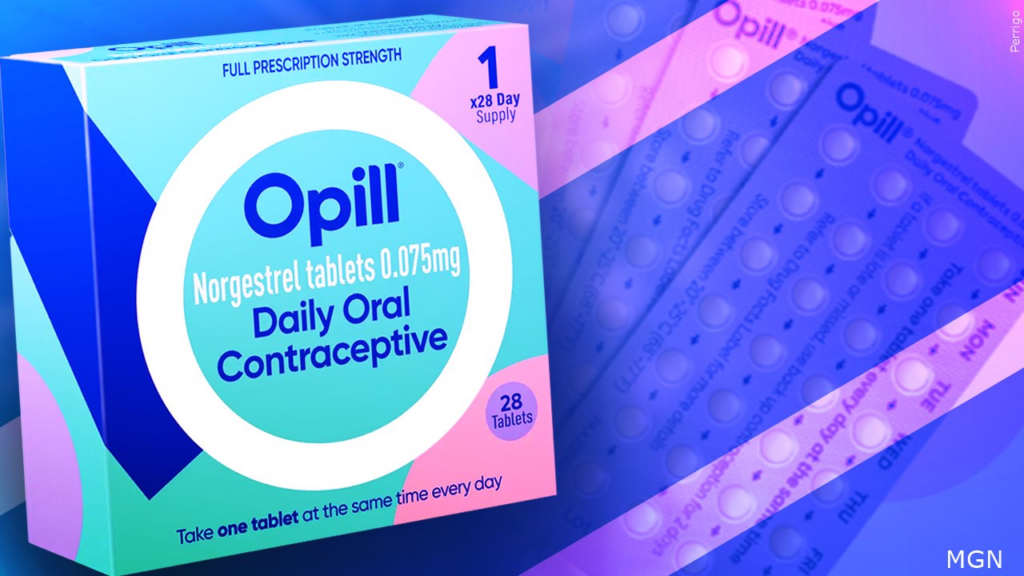The Future Of Reproductive Healthcare: The Role Of Over-the-Counter Birth Control Post-Roe

Table of Contents
Increased Access and Convenience
The availability of over-the-counter (OTC) birth control promises to significantly improve access and convenience for millions.
Eliminating Barriers to Access
Currently, obtaining birth control often involves navigating several hurdles. These include: scheduling doctor's appointments, facing potentially high costs, navigating insurance complexities, and even experiencing stigma associated with seeking reproductive healthcare. Over-the-counter birth control aims to dismantle these barriers.
- Reduced healthcare costs: Eliminating the need for doctor visits and prescriptions drastically reduces the financial burden for many, making birth control more affordable and accessible.
- Improved convenience: Purchasing birth control becomes as simple as buying other OTC medications, increasing convenience and reducing time constraints.
- Increased privacy: Individuals can manage their reproductive health privately without disclosing personal information to healthcare providers or insurers.
- Reduced stigma: The ease of access may reduce the social stigma often associated with birth control, encouraging more open conversations about reproductive health.
This increased accessibility is particularly important for underserved populations, including those in rural areas with limited access to healthcare providers, low-income individuals, and minority communities who often experience disproportionate barriers to healthcare.
Empowering Patients
Making birth control OTC places the power of reproductive health management directly in the hands of individuals.
- Informed decision-making: With readily available information and easy access to various contraceptive options, individuals can make informed choices based on their needs and preferences.
- Self-management of contraception: Patients gain greater control over their own healthcare, leading to increased autonomy and responsibility in managing their reproductive health.
- Control over personal healthcare: The ability to independently access birth control fosters a sense of empowerment and control over one's body and future.
Furthermore, increased accessibility may lead to improved adherence to birth control regimens. The convenience of readily available OTC options could encourage consistent use, further reducing the risk of unintended pregnancies.
Potential Impacts on Public Health
The widespread availability of OTC birth control could have significant ramifications for public health outcomes.
Reduced Unintended Pregnancies
Increased access to effective contraception is directly linked to a decrease in unintended pregnancies.
- Fewer abortions: Studies show a strong correlation between increased access to contraception and a reduction in abortion rates.
- Improved family planning: Individuals can proactively plan their families, aligning their reproductive choices with their life goals.
- Reduced strain on public health resources: Fewer unintended pregnancies alleviate the burden on public health systems related to prenatal care, childbirth, and related social services.
Research consistently demonstrates a strong link between convenient access to birth control and lower rates of unintended pregnancies. For example, [cite relevant studies and statistics here].
Impact on STI Rates
The impact of OTC birth control on sexually transmitted infection (STI) rates is more complex.
- Potential increase: Decreased reliance on comprehensive sexual health services during doctor visits could potentially lead to a decrease in STI testing and counseling.
- Potential decrease: Increased knowledge and use of contraceptives could, conversely, lead to safer sexual practices and potentially lower STI transmission rates.
Therefore, comprehensive sexual health education remains paramount alongside increased access to contraception. Public health campaigns promoting safe sex practices and regular STI testing are crucial to mitigate any potential negative impacts.
Challenges and Concerns
While the prospect of OTC birth control is promising, potential challenges require careful consideration.
Misinformation and Misuse
The ease of access to OTC birth control necessitates addressing concerns about potential misuse and the spread of misinformation.
- Need for accurate information campaigns: Comprehensive public health campaigns are vital to provide accurate information on proper usage, potential side effects, and limitations of different contraceptive methods.
- Importance of clear and accessible instructions: Clear and concise instructions on OTC birth control packaging are crucial for safe and effective use.
- Potential for increased reliance on unreliable sources: Efforts must be made to combat misinformation spread through social media and other unreliable sources.
Clear communication and education are critical to ensuring safe and effective utilization of OTC birth control.
Ensuring Equity and Affordability
Affordability is critical to ensuring equitable access for all socioeconomic groups.
- Government subsidies: Government programs may be necessary to subsidize the cost of OTC birth control for low-income individuals.
- Manufacturer pricing strategies: Manufacturers must consider pricing strategies that ensure affordability without compromising quality.
- Potential for disparities based on geographical location and income level: Measures must be taken to address potential disparities in access based on location and socioeconomic status.
Addressing these challenges is paramount to preventing unintended consequences that disproportionately affect marginalized communities.
The Role of Government Regulation and Policy
Government regulation and policy play a crucial role in ensuring the safe and effective implementation of OTC birth control.
FDA Approval and Oversight
Rigorous FDA approval and ongoing monitoring are essential.
- Ensuring safety and efficacy: The FDA must meticulously evaluate the safety and efficacy of all OTC birth control options before approval.
- Establishing clear labeling requirements: Clear and comprehensive labeling is essential for patients to understand proper use, potential side effects, and contraindications.
- Addressing potential side effects: Mechanisms must be in place to monitor and address potential side effects following OTC availability.
Policy Implications and Future Legislation
Future legislation will significantly impact the accessibility and affordability of OTC birth control.
- Potential impact on insurance coverage: Decisions regarding insurance coverage for OTC birth control will influence accessibility.
- State-level regulations: Individual states may implement their own regulations, potentially creating inconsistencies in access across the country.
- Federal funding for reproductive health services: Federal funding plays a crucial role in supporting public health initiatives related to reproductive health.
The landscape of reproductive healthcare is constantly evolving, and proactive policymaking is crucial to ensure that OTC birth control benefits all individuals, regardless of their socioeconomic status or geographic location.
Conclusion
The transition to over-the-counter birth control post-Roe v. Wade presents both opportunities and challenges. While increased access and convenience promise to empower patients and improve public health outcomes, careful consideration must be given to potential pitfalls like misinformation and ensuring equitable access. By addressing these concerns through robust public health initiatives, clear regulations, and ongoing research, we can maximize the positive impact of over-the-counter birth control and work towards a future where reproductive healthcare is accessible and affordable for everyone. Learn more about the future of accessible over-the-counter birth control and how you can advocate for improved reproductive healthcare options in your community.

Featured Posts
-
 Foot Locker A Look At Past And Potential Future Executive Shifts
May 15, 2025
Foot Locker A Look At Past And Potential Future Executive Shifts
May 15, 2025 -
 The Unexpected Rise A Dodgers Forgotten Signing Makes The Team
May 15, 2025
The Unexpected Rise A Dodgers Forgotten Signing Makes The Team
May 15, 2025 -
 Vm Hockey 2024 Analys Av Tre Kronors Lagbygge Kanadas Franvaro Och Tjeckiens Pastrnak Hoppet
May 15, 2025
Vm Hockey 2024 Analys Av Tre Kronors Lagbygge Kanadas Franvaro Och Tjeckiens Pastrnak Hoppet
May 15, 2025 -
 Creatine 101 Benefits Risks And Dosage
May 15, 2025
Creatine 101 Benefits Risks And Dosage
May 15, 2025 -
 Butlers Departure Dwyane Wades Perspective
May 15, 2025
Butlers Departure Dwyane Wades Perspective
May 15, 2025
